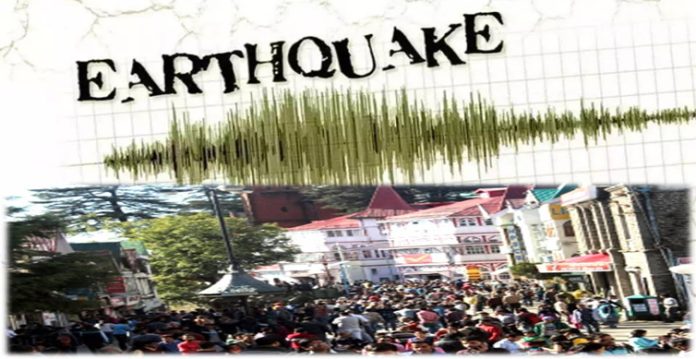Two back-to-back earthquakes, one of a medium intensity measuring 3.2 magnitudes on the Richter scale, on early Saturday rocked Himachal Pradesh where climate change is already having a drastic and detrimental effect.
Also, indiscriminate drilling of the hills for constructing tunnels is forcing rural communities, mainly in fragile and eco-sensitive zones of Chamba, Kinnaur, and Lahaul-Spiti districts, to raise clamor against upcoming hydropower stations with their houses developing cracks and natural water resources disappearing.
In recent years, seepage in the Chamera III project that washed off Mokhar village in the Chamba district, the bursting of the reservoir of the Aleo-II project in the Kullu district at its first testing, and the seepages in the Karchham Wangtoo tunnel are indicators of a disaster waiting to happen.
Also Read: Mild earthquake felt in Uttarakhand
Currently, the 180 megawatts (MW) Bajoli Holi hydropower project in Chamba has been facing anger from the tribal Gaddi community as they fear the project is posing threat to their houses and fields owing to cracks and seepage in private and public land.
The question is: Does the state has made a scientific assessment of disaster-prone areas, studied geological and hydrological impacts for strict compliance with environmental and safety norms, and prepared exigency plans?
These frightening realities have been mentioned several times in performance audits by the Comptroller and Auditor General (CAG) that is to ascertain the state’s preparedness.
According to Himdhara, a state-based environment action group, the sheer negligence is evident at two levels — firstly, the failure in ensuring compliance with environmental and safety norms by hydropower project authorities and the government, and secondly, the negligence towards the very impacts of unregulated hydropower development.
Local NGOs and green activists are also demanding that international financial institutions must be held accountable for their financing of disastrous hydropower projects in the Himalayas.
Several shortcomings surfaced during the crisis — man-made or natural — admit government officials.
An official, requesting anonymity as he is not authorized to speak to the media, told IANS in case of disaster or natural calamity coordination among state and Central agencies involved in relief and rescue operations is almost a miss.
“No nodal officer is appointed at the state level to coordinate and monitor the operations,” he remarked.
Also, there is no mechanism for reaching out to the affected people in the shortest possible time and no round-the-clock dedicated helpline service to provide information regarding post-disaster actions.
“The state has no special chopper to handle emergencies. Only the chief minister’s official chopper is deployed for airlifting victims,” added the official.
The hills of Himachal Pradesh, especially in the Kullu, Shimla, and Kinnaur districts, are more prone to natural disasters like flash floods, cloudbursts, and landslides. Official data show more than 1,500 people have been killed in flash floods in the state in the past 20 years.
This story has been sourced from a third-party syndicated feed, agencies. Raavi Media accepts no responsibility or liability for the dependability, trustworthiness, reliability, and data of the text. Raavi Media management/ythisnews.com reserves the sole right to alter, delete or remove (without notice) the content at its absolute discretion for any reason whatsoever.)







